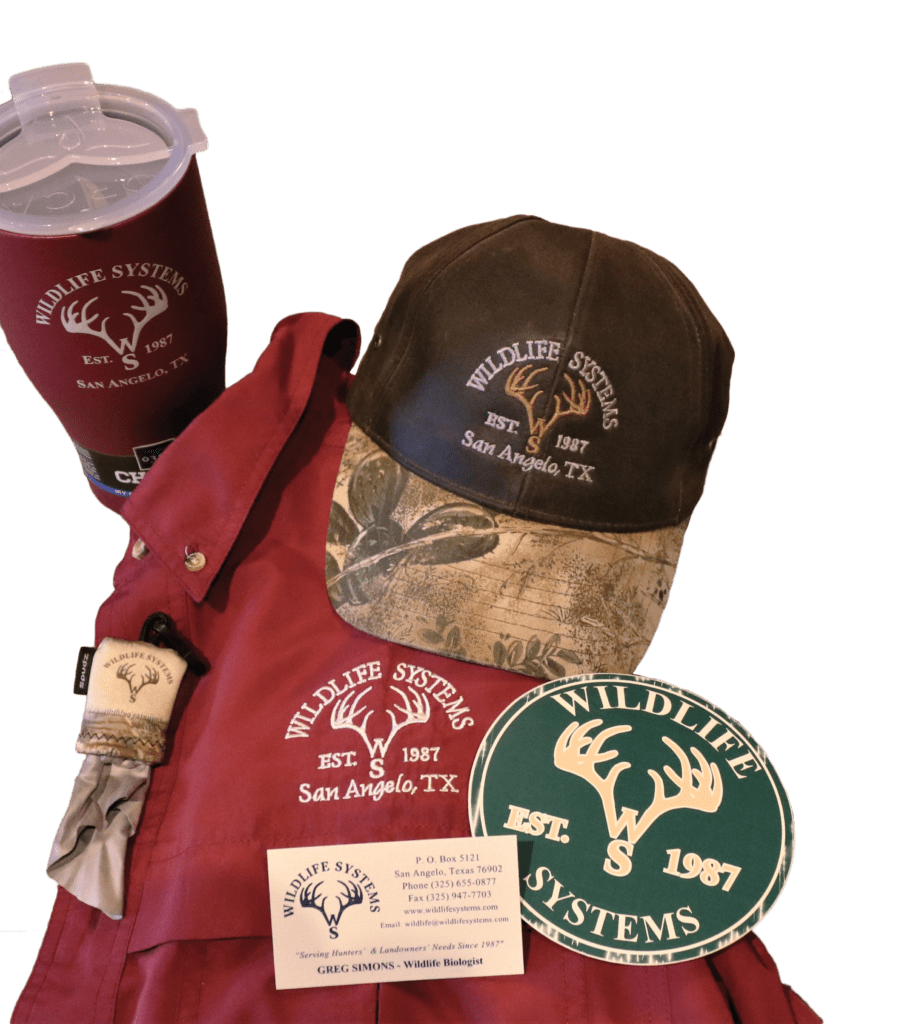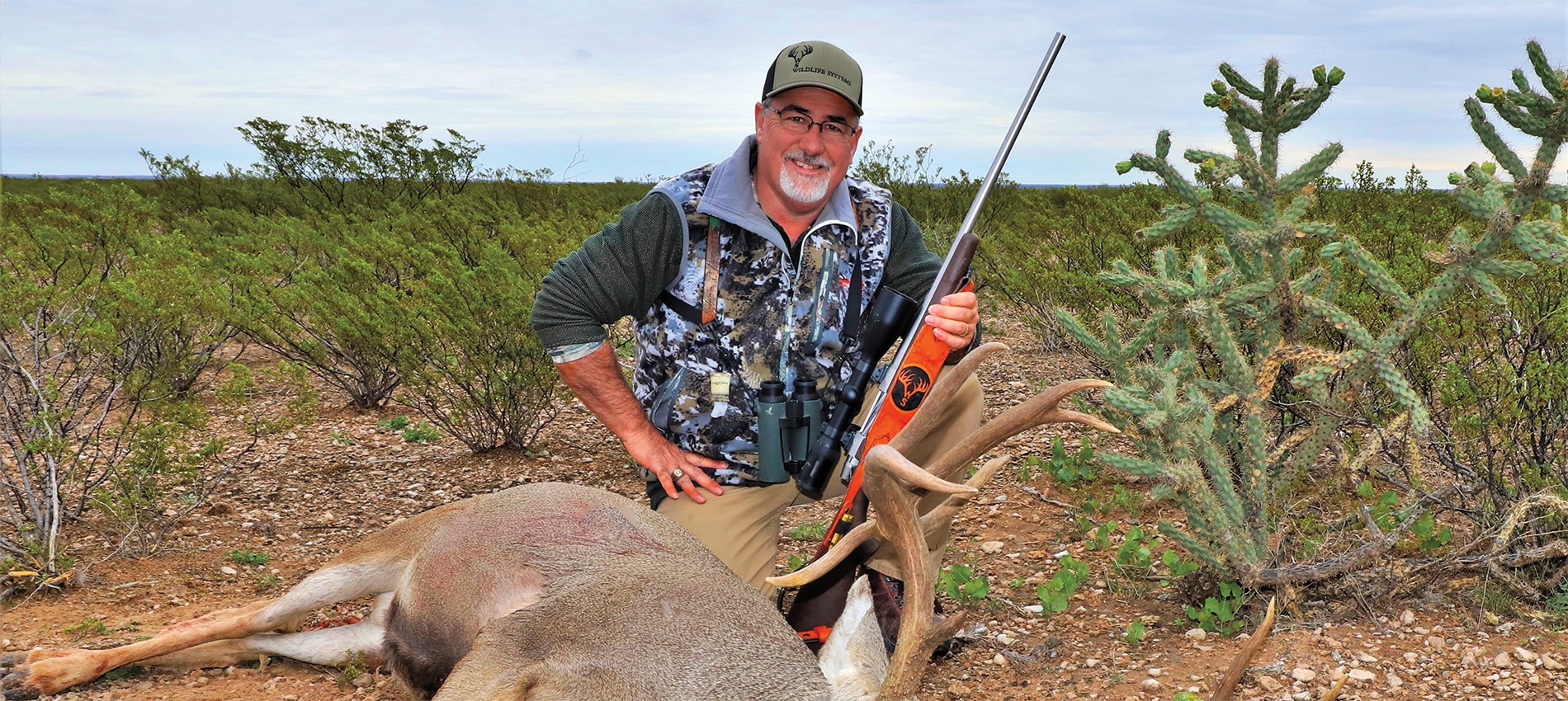
This article is featured in the Winter 2019 issue of LAND magazine. Click here to find out more.
While standing in line at a Minneapolis airport Starbucks some years ago, a lady who was also waiting to place her order asked, “You from Texas?” and I answered, “Let me guess, my accent gave me away?” She then replied, “No, I saw the logo on your shirt. You own that company?” Not knowing where the conversation might be headed, I looked at her suspiciously and replied, “Why do you ask?” and she then went on to explain that she had a friend whose husband hunts with a company in Texas that is owned by a wildlife biologist and that the company offers more than hunting services; they also provide wildlife management services. I asked her how she made that connection to me and she said that the logo on my shirt matched the logo on a hat that her friend’s husband sometimes wears. I asked her if she hunted and she responded, “I’m not a hunter but I love nature and I appreciate a hunting company that also places emphasis on wildlife conservation, and I understand that you guys do that. I also like the name of your company, as it sounds like you’re not simply into killing wild animals.”
Regarding business branding, there are at least three features of the conversation that I just described which are noteworthy. One, a total stranger who lives on the other end of the country recognized our company logo. Two, our company name, Wildlife Systems, Inc., apparently provided a positive connotation to her. And, thirdly, she knew that our company offered wildlife management services in addition to offering outfitted hunting trips, and she seemed to appreciate who we are and what we do, even though she is not a hunter.
What I just described is a form of branding, or a result of branding. I’m a big believer in the power of branding and what branding means in terms of public perceptions and how that ties into market perceptions. I’ve lightly studied branding for many years, and though I do not consider myself to be a branding expert, I do think that some firms and experts who offer such services tend to over-complicate their philosophies and communications on this topic. So, I’m going to provide a few mile-high thoughts on this subject, condensed, 101.
Names, Logos and Slogans
Start-up companies are well-advised to place a great deal of thought into creating the name of their new business. Company names do not have to tell a story or even be reflective of the type of product or service that is offered, but it’s important that the name is simple and easy to remember. Once a business name is established and has been in place for a while, it’s hard to go back to the drawing board if you feel like the business name is not a good fit. Simple things, such as will the name easily fit on a cap or perhaps on a logo without looking too busy, should be considered. Smith Enterprises, LLC may not tell a story, but it’s simple and easy to remember, which can be important.
Logos are a bit more pliable. Ideally, a business will have a “good” logo that remains in-place for many years and remains relevant over the long haul. However, unlike company names, logos can be changed without as much collateral damage. Logos may tell a story or may simply create some degree of eye-appeal for marketing and other business functions. Same as with business names, there is something to be said about the benefits of keeping things simple with logos. Having images with clean and simple lines make it easier to reproduce logos that are clearly legible, especially when it comes to embroidery. To create marketing power through logos, they should be used universally across various business tools including letterhead, signage, business cards, websites, labels, caps, shirts and other forms of visual tools. Ideally, over time, the market will associate or connect the company name with the logo without even seeing the name.

Slogans tell a story. They are like logos in that slogans can be more pliable than business names, but there needs to be some consistency with the use of slogans. Some companies use their mission statement as their slogan, but in that case, the mission statement must be concise. Shorter is generally better with slogans so that it can be neatly bundled along with logos or conveniently built into various types of communications like media releases or at the bottom of stationery. Collectively, the combined use of the business name, logo and slogan should create a tie that the market connects with, while also telling a story.
Operating Culture
A business’s “operating culture” often defines the market’s perception of that business, which in turn, defines the business itself. A strong business platform will have best management practices (BMPs) in place that consistently yield quality products and services through sound mechanics and through friendly, positive behavioral attitudes. Fundamentally, the basis of an effective branding campaign begins and grows from satisfied clients who hopefully become loyal patrons and who serve as ambassadors for that business. Such successful business practices do not generally happen by accident, so it should be incumbent for the business proprietor to intelligently and deliberately create a path of developing BMPs that help build client loyalty and consequently set the business on a positive branding trajectory that is built upon over time and is a reflection of the operating culture.
Communication and Messaging
I’ve heard said, “It’s not what you say, but how you say it.” I beg to differ with this philosophy, especially when it comes to branding, and my slant on this philosophy is, “It’s what you say AND how you say it.” These days, during the digital era, especially through social media, effective communication is part and parcel to business branding, plain and simple. Messaging content and messaging style, along with frequency and mediums of delivery, are the trump cards when it comes to using communication and messaging to build your brand. Say it right, say it often and speak to the right audience, again and again.
Repetition and Longevity is Key
Effective branding does not happen overnight. For people or markets to connect with businesses in a meaningful way, this often requires continued exposure to those potential markets over long enough periods of time to help ensure that an identity is created within those markets. As a rule, industries and markets that are highly competitive with other vendors often require more time and exposure to create successful branding initiatives, principally due to the dilution effects of such highly competitive markets. Be consistent with your efforts, recognizing that effective branding is more of a marathon than a sprint.
Also, it’s very important to remember that successful branding does not have to take place on a national or global level. Effective branding campaigns are often best tackled more at the community level, whether that community be geographically defined by city or township, whether it be a community group that makes up an NGO, or whether it simply be a community of existing clients that are already part of your business portfolio. Think big, while starting small, is a good rule of thumb for successful business branding.



